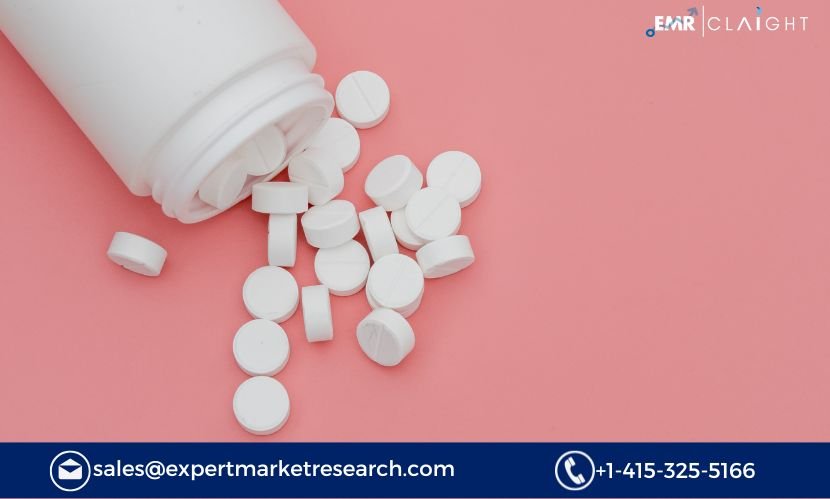Introduction
Paracetamol, also known as acetaminophen, is one of the most commonly used over-the-counter (OTC) drugs worldwide. It is primarily used as an analgesic (pain reliever) and antipyretic (fever reducer) for treating mild to moderate pain, such as headaches, muscle aches, and dental pain, as well as for reducing fever. The growing demand for pain-relief medications due to lifestyle changes, increasing awareness of self-medication, and the rise in healthcare accessibility has resulted in a steady increase in the global demand for Paracetamol. This Paracetamol Manufacturing Plant Project Report outlines the necessary steps for setting up a manufacturing plant to produce Paracetamol. The report will cover market analysis, production processes, financial considerations, technical specifications, and regulatory compliance required for establishing a successful Paracetamol production facility.
Market Overview and Demand Analysis
Paracetamol is a globally recognized drug, with its demand continually rising due to the growing prevalence of pain-related conditions, the aging population, and an increase in the consumption of OTC drugs for self-medication. According to market studies, the global analgesic drugs market has witnessed substantial growth and is expected to continue expanding, making the Paracetamol manufacturing sector a lucrative business opportunity.
Key Drivers of Paracetamol Demand:
-
Increased Self-medication: With rising healthcare costs and growing access to online pharmacies, there is an increasing trend of self-medication. Paracetamol is widely available as an OTC drug, making it a preferred choice for consumers treating mild pain and fever.
-
Aging Population: As the global population continues to age, the demand for pain-relief drugs increases. Paracetamol, with its mild side effects and efficacy, is particularly favored among the elderly population who may require consistent pain management.
-
Growth of the Pharmaceutical Industry: With the growing pharmaceutical industry, particularly in emerging markets such as India, China, and Southeast Asia, the demand for Paracetamol tablets, syrup, and other formulations is expected to rise.
-
Rising Prevalence of Pain and Fever: The increasing incidence of lifestyle-related ailments, such as arthritis, back pain, and headaches, coupled with seasonal flu outbreaks and other infectious diseases, has led to a consistent demand for Paracetamol-based products.
Get a Free Sample Report with Table of Contents@
Market Trends:
- Rising Demand in Emerging Markets: The pharmaceutical industry in emerging markets is expanding rapidly, and Paracetamol’s widespread use in these regions is likely to increase.
- Formulation Innovation: There is a growing focus on creating innovative formulations, such as extended-release tablets, liquid forms, and Paracetamol combined with other active ingredients like caffeine or antihistamines, to cater to specific consumer needs.
- Sustainability in Production: Consumers and businesses alike are becoming more conscious of sustainability. The pharmaceutical manufacturing sector is moving towards more sustainable practices, including eco-friendly packaging and minimizing waste.
Manufacturing Process and Technical Aspects
The production of Paracetamol involves several stages, including the synthesis of raw materials, formulation, quality control, and packaging. Below is an overview of the typical manufacturing process for Paracetamol:
1. Synthesis of Paracetamol (Acetaminophen)
The process begins with the synthesis of Paracetamol. The raw material used is p-aminophenol, which undergoes acetylation using acetic anhydride or acetyl chloride in the presence of a suitable catalyst.
- Reaction:
p-Aminophenol + Acetic Anhydride → Paracetamol (Acetaminophen) + Acetic Acid
This reaction is conducted under controlled conditions of temperature and pressure to ensure high yield and purity.
2. Purification
After the synthesis reaction, the crude Paracetamol is separated from the reaction mixture by filtration, followed by crystallization. Recrystallization is a crucial step to remove impurities and obtain high-purity Paracetamol, which meets pharmacopoeial standards.
- Filtration: Removes unreacted raw materials and by-products.
- Crystallization: Helps in purifying the Paracetamol by dissolving the crude product in a solvent and allowing it to slowly crystallize.
3. Drying
The purified Paracetamol is then dried to remove any residual solvent. The drying process should be done under controlled conditions to ensure that the Paracetamol retains its quality and does not degrade.
4. Tableting and Formulation
Once the Paracetamol is purified and dried, it can be formulated into various dosage forms, including tablets, capsules, syrups, or suspensions. The formulation process involves mixing the active ingredient (Paracetamol) with excipients such as binders, fillers, disintegrants, and lubricants to ensure tablet consistency, easy dissolution, and proper bioavailability.
- Tablet Compression: The powdered Paracetamol is mixed with excipients, and the mixture is compressed into tablets using a tablet press.
- Capsule Filling: In some cases, Paracetamol is encapsulated in soft or hard gelatin capsules.
- Syrup Formulation: Paracetamol can also be formulated as a syrup or suspension, especially for pediatric use.
5. Quality Control and Testing
Quality control is a critical component of Paracetamol manufacturing. Various tests are performed to ensure that the product meets the required specifications. These include:
- Purity and Strength: Ensuring the Paracetamol content is consistent and meets the required standards.
- Dissolution Testing: Evaluating how quickly the drug dissolves in the body.
- Stability Testing: Determining the shelf life of the product under various storage conditions.
- Microbial Testing: Ensuring that the product is free from harmful microorganisms.
6. Packaging
After passing quality control, the final product is packaged for distribution. Packaging plays a significant role in ensuring the stability of Paracetamol, protecting it from moisture, light, and contamination. The packaging may include blister packs, bottles, or bulk containers, depending on the final product form.
Facility Design and Layout
Designing an efficient and compliant manufacturing facility is crucial for ensuring smooth production and high product quality. The key factors to consider when designing the plant include:
- Production Areas: The facility should be divided into different sections, such as raw material storage, synthesis, purification, tablet formulation, packaging, and storage areas.
- Quality Control Laboratory: A dedicated lab should be set up for testing raw materials, intermediate products, and final formulations.
- Cleanroom Standards: Certain sections, especially those dealing with formulation and packaging, should adhere to cleanroom standards to prevent contamination.
- Waste Management: Proper systems for handling and disposing of chemical waste and by-products generated during production must be in place.
- Storage Facilities: Adequate storage for raw materials, finished products, and packaging materials is essential to ensure efficient inventory management.
Financial Considerations
Starting a Paracetamol manufacturing plant requires significant investment in both capital and operational expenditures. Below are key financial considerations:
1. Capital Investment:
- Land and Building Costs: The purchase or lease of land and the construction of the plant.
- Machinery and Equipment: The cost of specialized machinery such as reactors, crystallizers, tablet presses, and packaging equipment.
- Licensing and Regulatory Compliance: Costs associated with obtaining necessary licenses, certifications, and regulatory approvals for manufacturing pharmaceuticals.
- Raw Material Costs: The cost of raw materials like p-aminophenol and acetic anhydride, which are required for the production of Paracetamol.
2. Operating Costs:
- Labor Costs: Salaries for plant workers, technical staff, and quality control personnel.
- Utility Costs: Energy consumption (electricity, water) for running the plant.
- Packaging and Distribution: The costs of packaging materials and transportation for delivering finished products to market.
- Maintenance: Regular maintenance of equipment and machinery to ensure smooth production.
3. Revenue Streams:
Revenue will primarily come from the sale of Paracetamol in various forms, such as tablets, capsules, and syrup, to pharmaceutical companies, distributors, and direct consumers. Long-term contracts with large pharmaceutical companies can provide stable revenue.
4. Profit Margins:
Profitability will depend on factors like production efficiency, raw material costs, and pricing strategy. By optimizing the manufacturing process and ensuring high product quality, the plant can achieve favorable profit margins.
Regulatory Compliance and Sustainability
Pharmaceutical manufacturing is highly regulated, and compliance with local and international standards is crucial. Some of the key regulatory requirements include:
- Good Manufacturing Practices (GMP): The plant must adhere to GMP guidelines set by regulatory bodies like the World Health Organization (WHO) and the U.S. Food and Drug Administration (FDA).
- Environmental Regulations: The plant must comply with environmental laws regarding waste disposal, emissions, and chemical handling.
- Product Certification: The final product must meet pharmacopoeial standards and be certified by regulatory bodies before being marketed.
- Sustainability Practices: The plant should incorporate energy-efficient technologies, reduce waste, and adopt environmentally friendly practices wherever possible.
Company Name: Claight Corporation
Contact Person: Peter Fernandas, Corporate Sales Specialist — U.S.A.
Email: sales@expertmarketresearch.com
Toll Free Number: +1–415–325–5166 | +44–702–402–5790
Address: 30 North Gould Street, Sheridan, WY 82801, USA
Website: www.expertmarketresearch.com
Aus Site: https://www.expertmarketresearch.com.au



